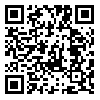BibTeX | RIS | EndNote | Medlars | ProCite | Reference Manager | RefWorks
Send citation to:
URL: http://journal.muq.ac.ir/article-1-851-en.html
2- 1Kerman University of Medical Sciences, Kerman, Iran.
Background and Objectives: Posture analysis methods are used for risk assessment of work activities in the incidence of musculoskeletal disorders. It is expected that the level of assessed risk for a certain job will be the same with different methods. This study aimed to investigate the correlation among three methods of RULA, QEC, and REBA.
Methods: This descriptive cross-sectional study was performed on workers of 28 job groups in a steel complex. To evaluate the body position and postural stresses imposed on the workers, after taking pictures of different tasks, images were analyzed using RULA, QEC, and REBA methods and the risk levels were determined.
Results: The correlation coefficient between RULA method and QEC and REBA methods was, respectively, 0.63 and 0.69, and it was calculated to be 0.56 between QEC and REBA methods, which was significant in all cases (p<0.01). Kappa agreement coefficient between RULA method and QEC and REBA methods was, respectively, 0.71 and 0.65, and it was calculated to be 0.36 between QEC and REBA methods, which was significant in all cases (p<0.01).
Conclusion: The results of the present study provides a better understanding of different observational assessment methods of musculoskeletal disorders. These results could be beneficial, especially for ergonomic specialists in choosing assessment methods before adopting beneficial intervention measures.
Received: 2016/05/17 | Accepted: 2016/05/17 | Published: 2016/05/17
| Rights and permissions | |
 |
This work is licensed under a Creative Commons Attribution-NonCommercial 4.0 International License. |







